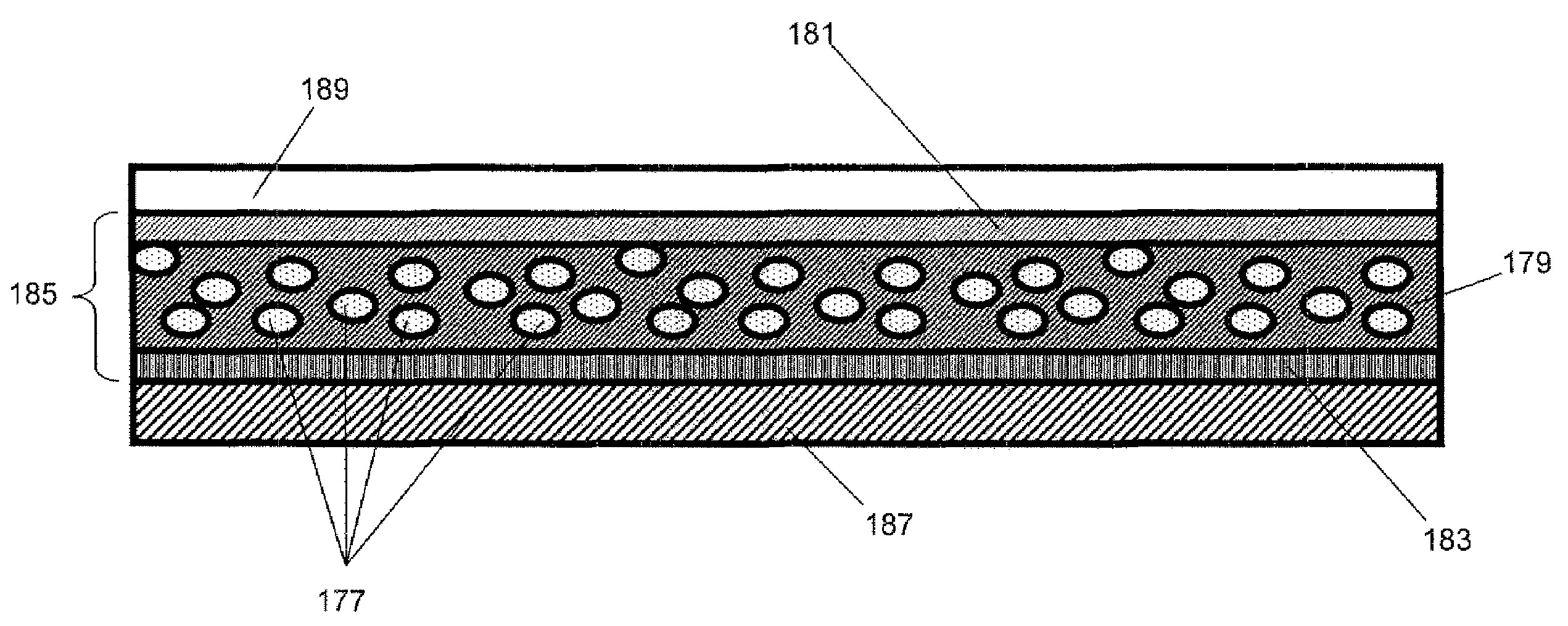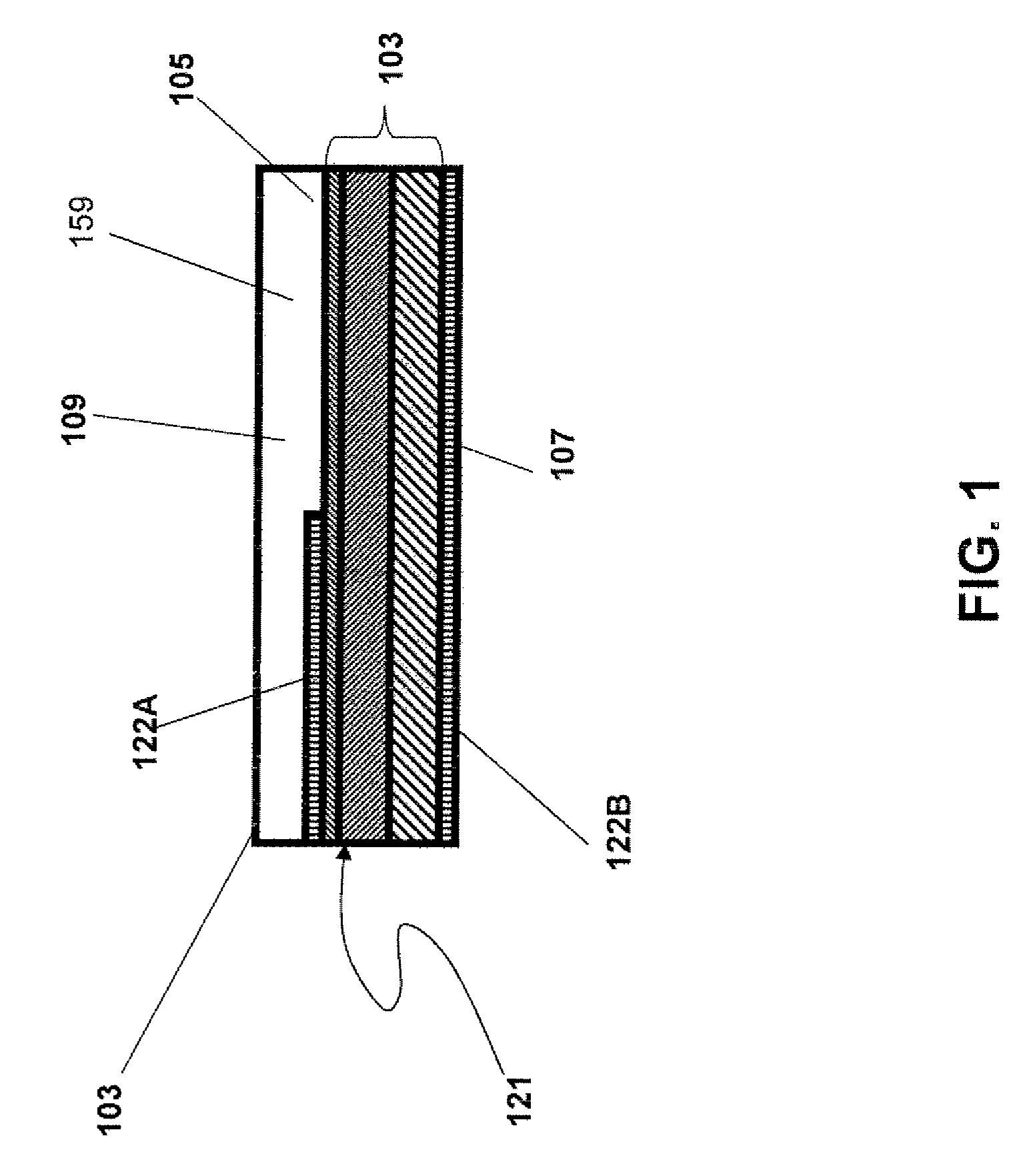Photovoltaic devices with silicon dioxide encapsulation layer and method to make same
a technology of photovoltaic devices and silicon dioxide, which is applied in the direction of liquid/solution decomposition chemical coating, pv power plants, radiation control devices, etc., can solve the problems of inferior quality films and achieve the effect of high optical transparency
- Summary
- Abstract
- Description
- Claims
- Application Information
AI Technical Summary
Benefits of technology
Problems solved by technology
Method used
Image
Examples
Embodiment Construction
[0022]This application incorporates by reference all matter contained in co-pending U.S. patent application Ser. No. 11 / 243,422, filed Oct. 3, 2005 and entitled “CERAMIC ANTENNA MODULE AND METHODS OF MANUFACTURE THEREOF” (the '422 application), Ser. No. 11 / 479,159, filed Jun. 30, 2006 and entitled “ELECTRICAL COMPONENT AND METHOD OF MANUFACTURE” (the '159 application), and Ser. No. 11 / 620,042, filed Jan. 6, 2007 and entitled “POWER MANAGEMENT MODULES AND METHOD OF MANUFACTURE” (the '042 application). In the '422 application, de Rochemont, discloses articles and methods that are used to form silicon dioxide-based layers and meta-material bodies on the surface of a semiconductor die using low-temperature liquid or powder aerosol sprays.
[0023]Photovoltaic (PV) cells, more popularly known as solar cells, convert sunlight to direct current (DC) electrical energy that can be used to charge batteries, power a variety of microelectronic devices, or drive DC motors. PV systems can also be co...
PUM
| Property | Measurement | Unit |
|---|---|---|
| temperatures | aaaaa | aaaaa |
| thickness | aaaaa | aaaaa |
| temperatures | aaaaa | aaaaa |
Abstract
Description
Claims
Application Information
 Login to View More
Login to View More - Generate Ideas
- Intellectual Property
- Life Sciences
- Materials
- Tech Scout
- Unparalleled Data Quality
- Higher Quality Content
- 60% Fewer Hallucinations
Browse by: Latest US Patents, China's latest patents, Technical Efficacy Thesaurus, Application Domain, Technology Topic, Popular Technical Reports.
© 2025 PatSnap. All rights reserved.Legal|Privacy policy|Modern Slavery Act Transparency Statement|Sitemap|About US| Contact US: help@patsnap.com



